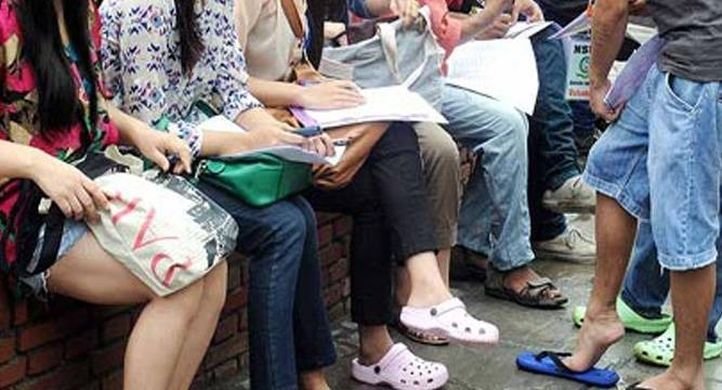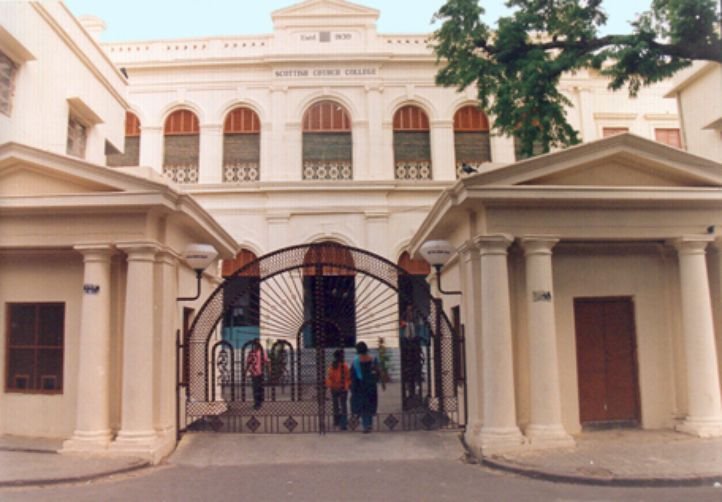India has undergone a drastic transformation over the decades and along with these changes there are some things that have stayed constant, unfortunately. Suppression in the form of restriction still prevails in our mindset, and therefore in the society.
When we speak about freedom and suppression, the first thing that needs to be mentioned is the treatment towards women across institutions. Educational institutions are one of many such places where restriction on students is garbed under ‘safety precaution’.

Scottish Church’s latest dress code
Scottish Church College of Kolkata has imposed a dress code inside the college premises. It includes a ban on short skirts, any kind of earrings or facial studs for boys, any kind of message written on T-shirts, half or three quarter-length trousers, round-neck T-shirts, slit skirts and ‘improperly worn’ salwar kameez and sarees.

“Clothing worn to the college should reflect the seriousness and importance of the learning environment. Therefore, students’ attire is expected to be based on modesty, neatness and safety on the campus,” said the notice.
The students of the college protested against the dress code after which the faculty put up a notice saying it was just a recommendation but not mandatory.
Women’s college in Kerala introduces uniform
A women’s college in north Kerala has banned tight jeans, short tops and leggings and has decided to introduce uniforms for its students from this academic year which also means that even ‘naqab’ for Muslim students would not be allowed inside the campus.
The dress code will be put into force from July 8 when the academic session begins for the first-year students at the women’s college run by the Muslim Educational Society (MES) at Nadakkavu in Kozhikode.

According to the new scheme, students will have to wear salwar, churidar bottom, and an overcoat. Muslim students have been permitted to wear a dark grey ‘mafta’ or head scarf.
Aligarh Muslim University imposed ban
In 2013, Aligarh Muslim University asked the students residing in one of its women’s hostels to wear “proper and decent-looking dresses, i.e. salwar kameez with dupatta , both in or outside the hostel”.Women were asked to keep only one mobile phone and avoid eating out by making sure they enter the details of their movement in a register inside the hostel according to the order signed by the Provost of Abdullah Hall for Girls.

A fine of Rs. 500 was also imposed for not adhering to the rules and regulations. After protest, the Aligarh Muslim University (AMU) administration withdrew it’s order.
Diktat passed in Haryana
In 2014, some schools in Haryana’s Rohtak district put restrictions on girl students from Class 7th to 12th from wearing skirts and directed them to wear salwar kameez instead.
As many as five Central Board of Secondary Education (CBSE) schools, which are run by Kurukshetra-based Hindu Shiksha Samiti (HSS), implemented the dress code in their respective schools.
And the reason for the restriction belongs to the weird lot, which was passed by the Samiti’s Rohtak unit, citing the reason that girls feel uncomfortable while sitting for morning prayers in skirts and that wearing salwar kameez will also prevent rowdy boys from passing lewd remarks at them.
As far as restriction is concerned, it only makes sense if proposed for safety but not to make it into a theatre of the absurd. Proposed, not imposed. When in Rome, do like the Romans is an old saying. And by that logic, one could adjust their attire (although this too is purely subjective). Why should a woman be forced to wear salwar kameez , while there is no education for boys and men to not look at a female as a piece of flesh.
The problem lies elsewhere, and the solutions are being churned from the farthest pole of the problem end.
Feature image source: News Nation
















